
Published:
Readtime: 5 min
Every product is carefully selected by our editors and experts. If you buy from a link, we may earn a commission. Learn more. For more information on how we test products, click here.
What’s the return policy likely to be on a watch after 45 million years? I only ask because that’s how long IWC Schaffhausen promises its new Portugieser Eternal Calendar’s moon phase will remain accurate. And in the off chance that turns out not to be the case, well, someone’s likely to have egg on their face and I’m determined it won’t be me. Not to imply that I think IWC’s experts don’t know what they’re doing—quite the opposite—but I’ll be hanging on to my receipt just in case. I recommend you do the same.
Kidding aside, IWC launched the extremely impressive Portugieser Eternal Calendar this week via its keynote presentation at Watches and Wonders 2024 in Geneva. Celebrity physicist Brian Cox was present to provide a helping hand and did so by posing a tricky question to those in attendance: what is time? As it turns out, the short answer is we don’t really know. What we do know, however, is how to measure it, and IWC’s Portugieser Eternal Calendar is a strong contender for the most sophisticated way of doing so long-term. Just know that it will be accurately tracking time, the calendar, and the moon’s rotation around the earth long after you’ve shuffled off this mortal coil.
More: Best Watch Releases of Watches & Wonders 2024 – Part 3
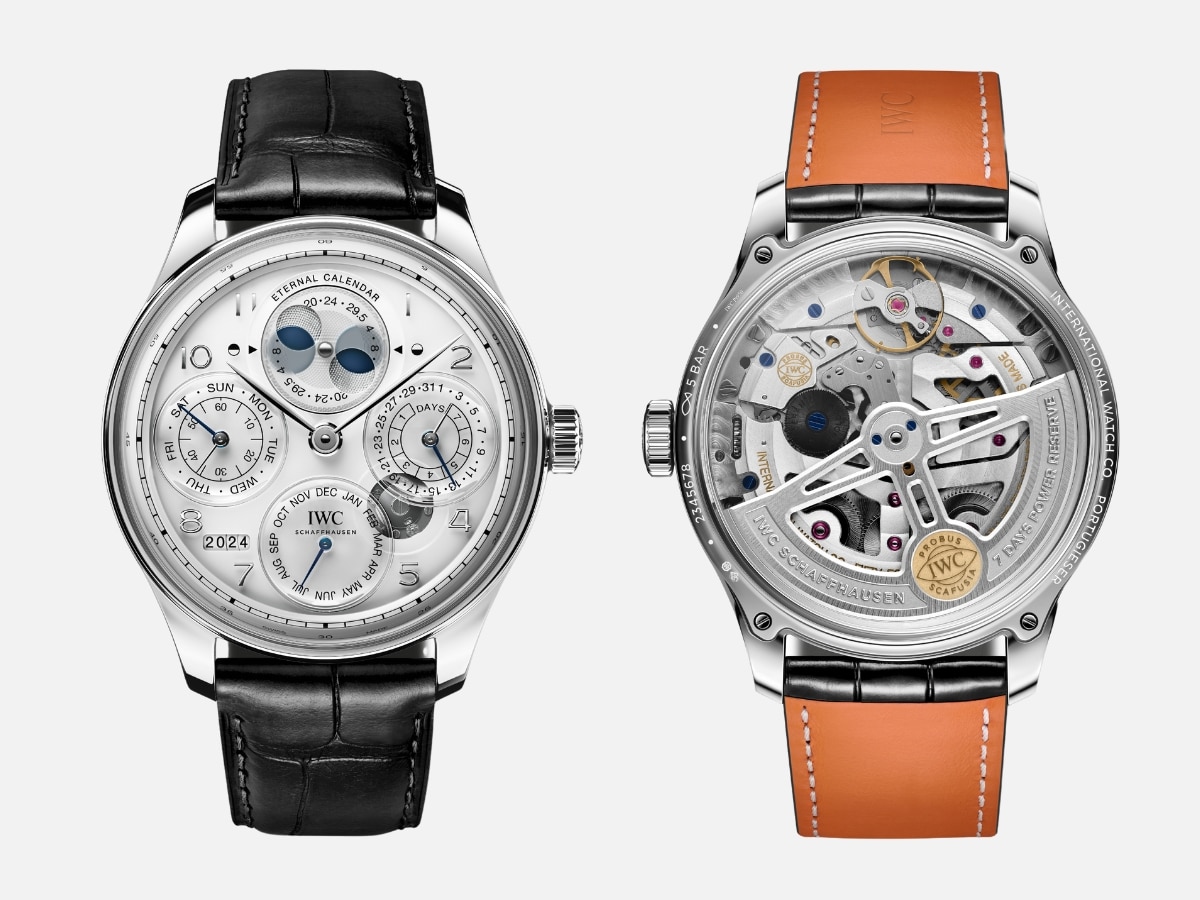
It’s Just a Moon Phase
So how has IWC made all of this possible? First of all, the moon phase display manages its feat of extreme accuracy via a newly developed reduction gear that means it will only deviate from the moon’s orbit by one day after 45 million years. Not to labour the point, but that is truly astonishing
The reason that following this has always proved so difficult is that a lunar cycle from new moon to new moon doesn’t take 30 days, but 29 days, 12 hours, 44 minutes, and 2.88 seconds. As such, IWC set out to reduce the duration of one calendar month to be as close as possible to one lunar cycle, and it did this by placing a reduction gear between the base movement and the moon phase disc.
From there, knowing that high precision is unlocked through the quantity and proportion of wheels used within a movement (as well as their number of teeth), IWC’s engineers used a computer program to simulate more than 22 trillion different combinations before coming upon a new reduction gear train using just three intermediate wheels. Said engineers then had to simply integrate this new gear train into the confined space of the watch’s eternal calendar module. Easy, right?
More: Best Watch Releases of Watches & Wonders 2024 – Part 2
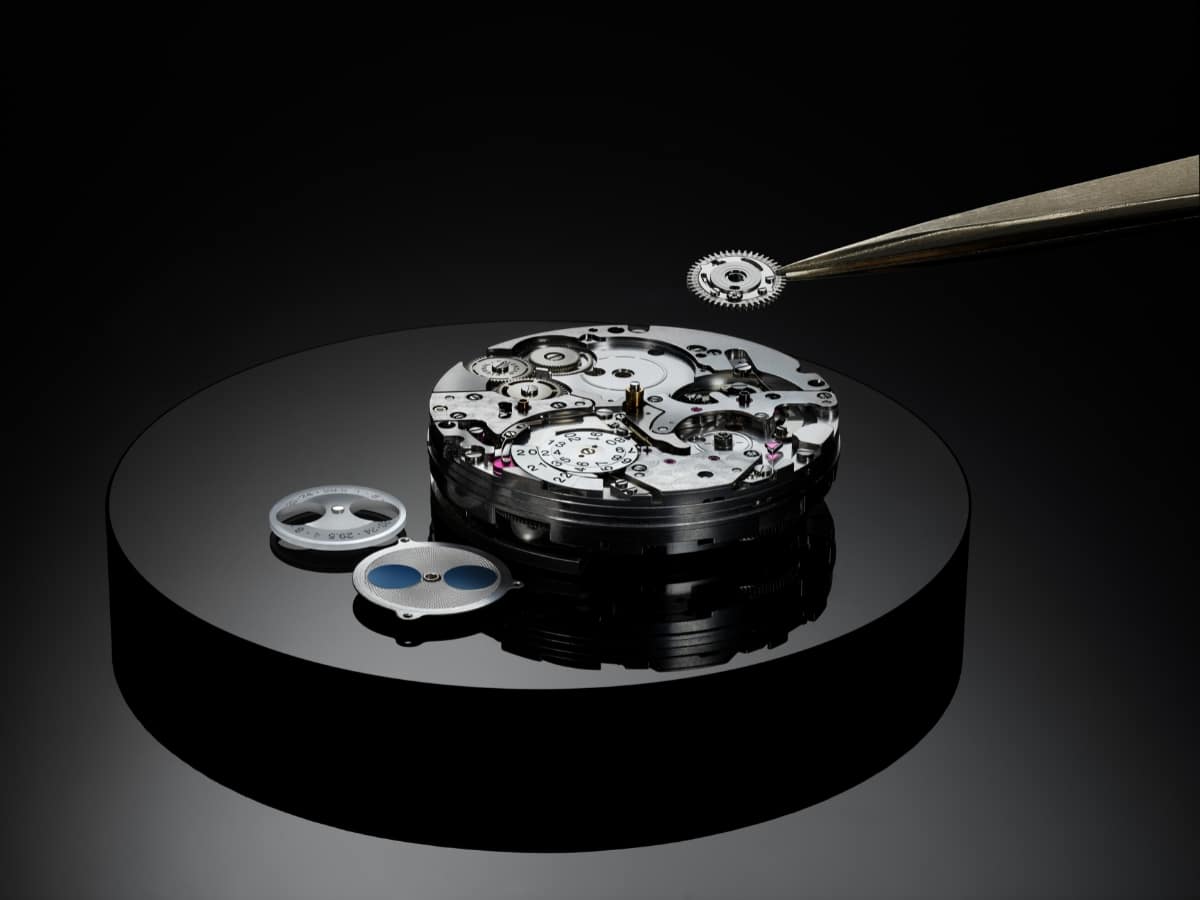
Three Days in Four Centuries
The second feature that has seen the Portugieser Eternal Calendar turn heads is its similarly incredible accuracy from a calendar point of view. While IWC’s calendar credentials have long been excellent, one small problem remained: the Gregorian calendar’s ridiculously complex leap-year exception rules.
What I mean by this is that three times over a four-hundred-year period, our calendars will skip a scheduled leap year to keep everything on track. The Portugieser Eternal Calendar takes this into account via a newly engineered 400-years gear that will see the calendar automatically skip three leap years over four centuries – an event which will occur for the first time in the year 2100, followed by 2200, and 2300, with 2400 again returning to leap year normality.
More: Grand Seiko Brings its A-Game to Watches and Wonders 2024
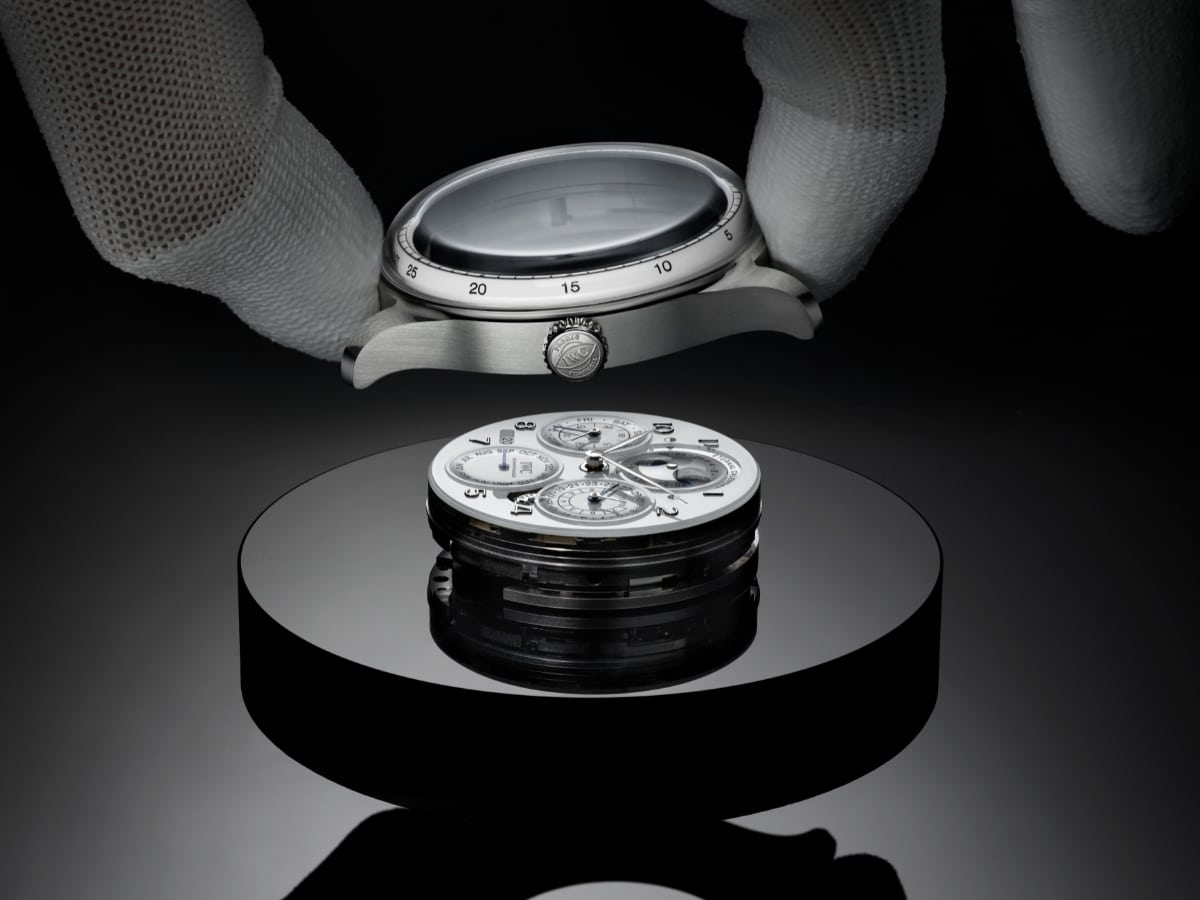
Brains and Beauty
From an aesthetic point of view, the Portugieser Eternal Calendar’s exterior is just as strong a proposition as its sophisticated interior deserves, resulting in a timepiece that’s incredibly elegant inside and out.
Particularly beautiful is the watch’s moon phase, positioned at the top of the dial. Using IWC’s signature Double Moon indication, it illustrates the moon as it will appear from both the northern and southern hemispheres at any given time. This indication consists of two super-imposed discs—a glass celestial disc with two small circular openings rotates above an immobile lower disc made of titanium and decorated with a Guilloché pattern—and as it moves, this design depicts the changing of the moon as it waxes and wanes.
More: New Rolex Watches for 2024 Revealed and Priced

Beyond that, the watch’s intricately finished platinum case, boasting a handsome combination of polished and brushed surfaces, contains the newly developed IWC-manufactured 52640 calibre which offers a seven-day power reserve. Naturally, the watch’s glass dial, subdials, and numerals are meticulous, as are the box-glass sapphire crystals. We’d expect nothing less. All of this is finished off with a black alligator leather strap—courtesy of Italian leather artisan Santoni—with a platinum folding clasp.
By combining ingenious design, impeccable craftsmanship, and incredible materials, IWC has created something really quite special here. The price is available on request, and while it’s hard to imagine anyone experiencing buyer’s remorse—at least not in this lifetime—if you manage to secure one, hang on to that receipt nonetheless.
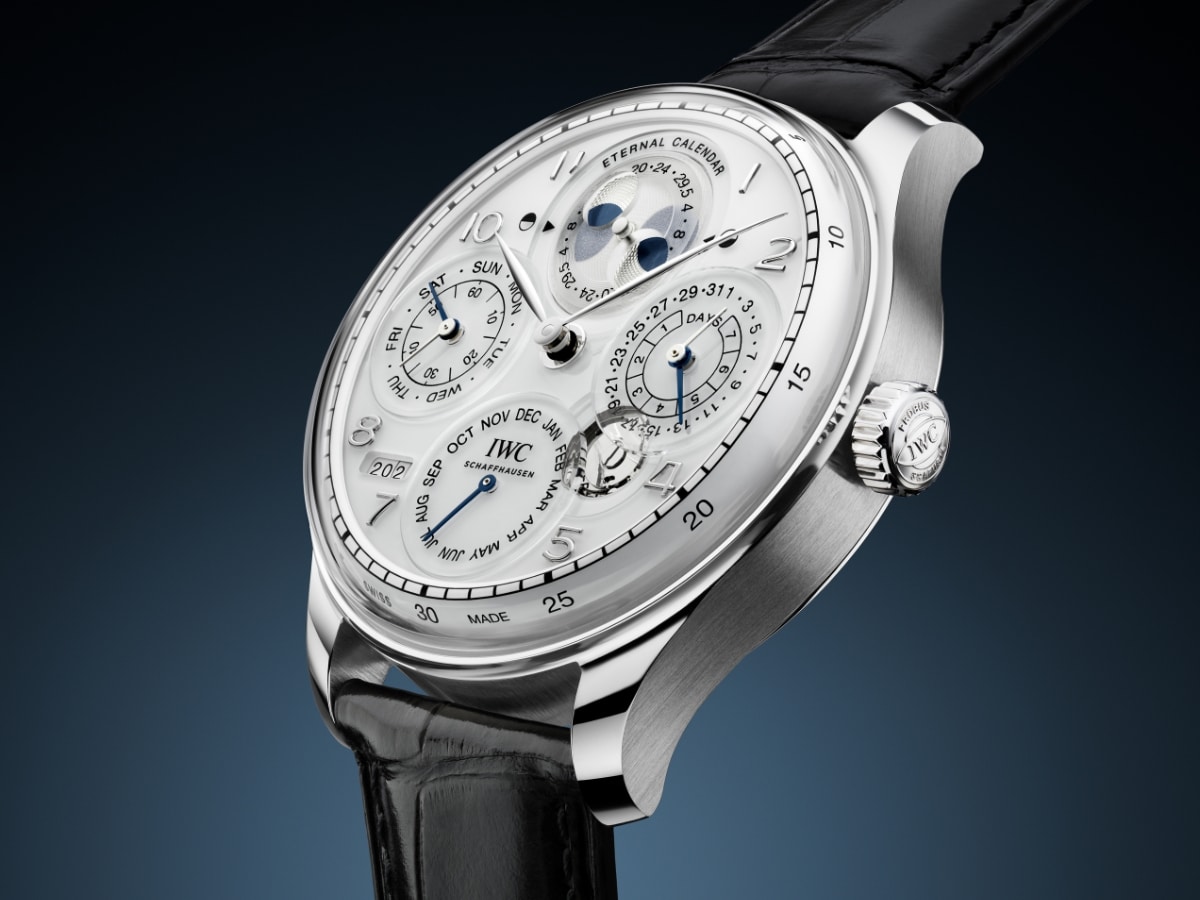
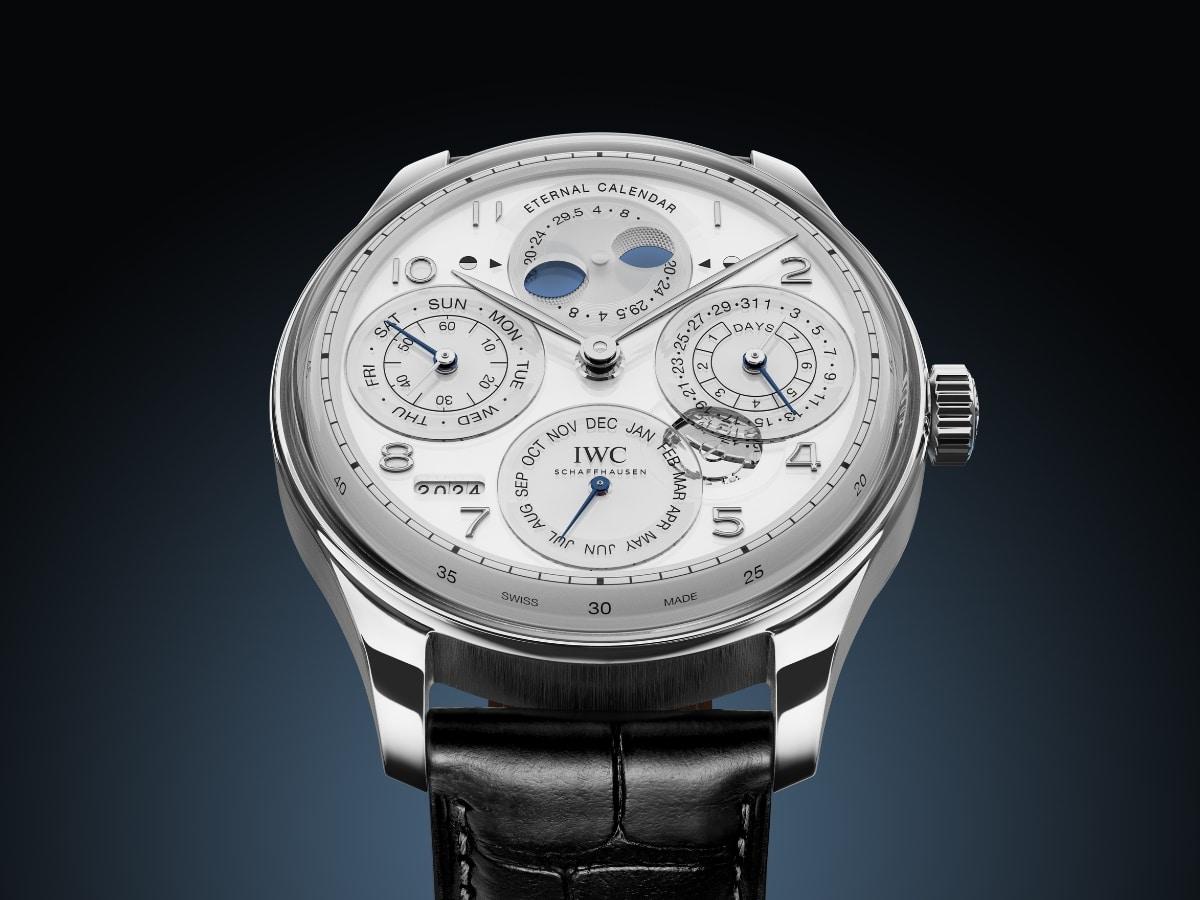





















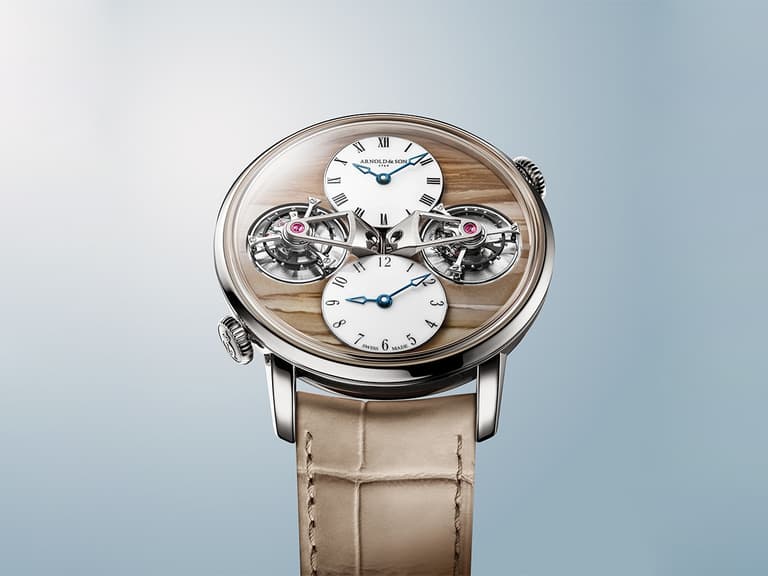
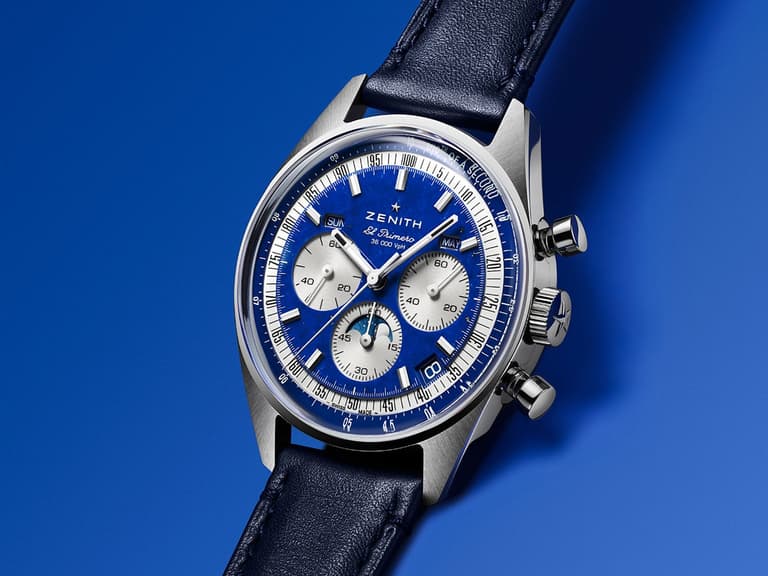
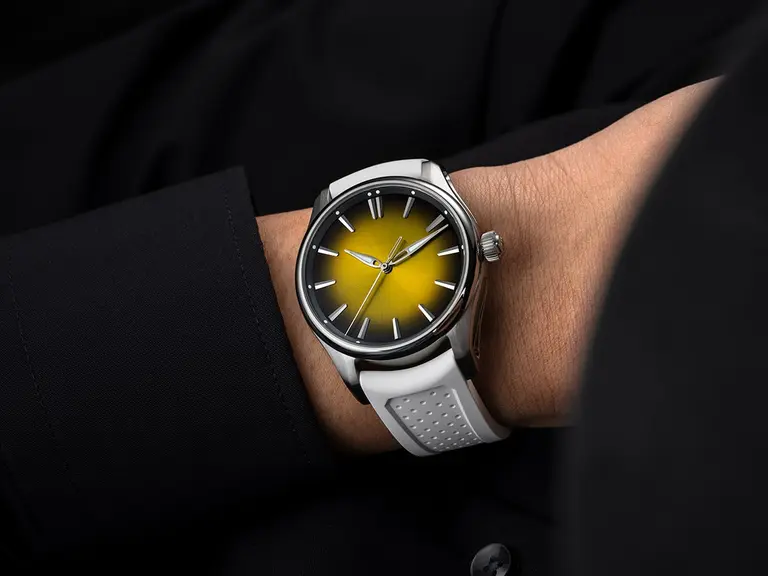





Comments
We love hearing from you. or to leave a comment.